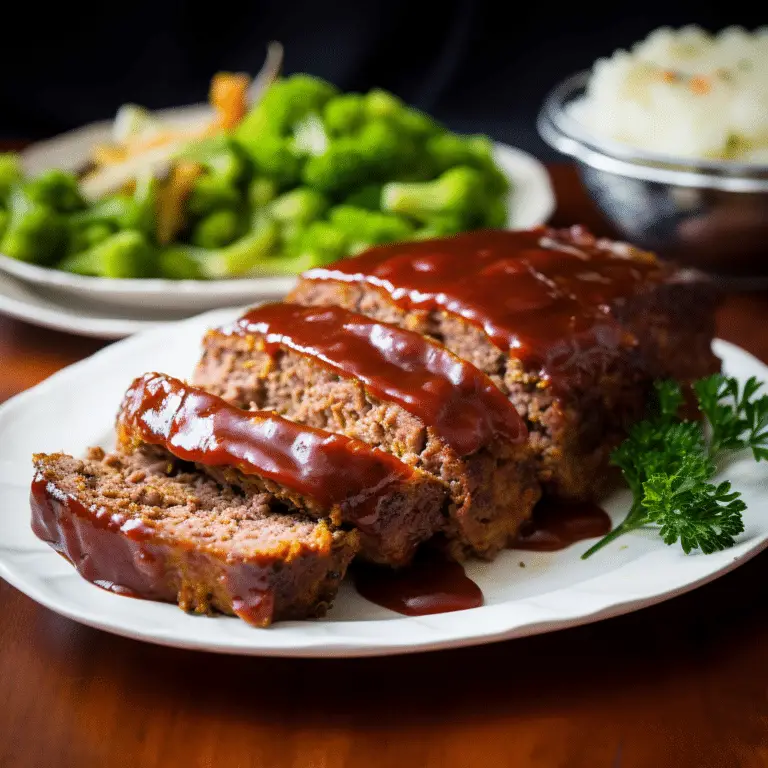Embrace the World of Formulas and Find Your Ideal Formula
Formula is a must-have in many industries – from healthcare to beauty. Comprehending the different kinds of formula is a necessity for experts and consumers. Are you a chemist inventing new products, or a customer hunting for the best option? Knowing the nuances of formulas can make all the difference.
Formulas can differ much depending on their purpose and ingredients. Skincare has formulas for moisturizing, anti-aging, and acne treatment. Each one is specially crafted with certain components to address these particular issues. Cosmetics also has different formulations for foundations, eyeshadows, and lipsticks to gain various effects and finishes.
Other industries rely on diverse formula types too. In the food industry, formulas alter for various dietary needs like low-fat or gluten-free options. Medicine has formulas tailored to particular conditions or patient demographics. Variations are endless when it comes to formulas across industries.
Don’t miss out on the ideal formula for your needs! Stay informed about the latest advancements and trends in the field. Keeping up-to-date with business news and seeking expert advice will help you make wise decisions when choosing formulas. Don’t let your lack of knowledge restrict your options – explore the fascinating world of formulas and unlock new chances for success.
Knowledge about different formula types can give you an edge in your industry. Embrace curiosity and continuous learning to stay ahead. Understanding formulas further can help you make sound choices that have a positive effect on your work or personal life.
Go on this exciting journey through formulas today! Discover how these magical concoctions can transform lives across industries. Update yourself with cutting-edge developments in this dynamic realm and unlock your potential. Your ability to navigate through different types of formulas can open doors to new opportunities and enhance your professional or personal journey. Become a master in formula knowledge and embrace the power it brings!
Benefits of Feeding
Formula feeding has lots of great benefits.
It’s convenient
Formula can be pre-made and stored when needed. This makes feeding the baby easier.
Formula feeding
Its also allows parents to share the responsibility of feeding the baby, helping them bond. Plus, formula milk contains important vitamins and minerals for a baby’s growth.
For mothers with medical or personal issues, formula feeding can be especially useful. And it gives parents more freedom too – no need to worry about finding suitable places to breastfeed in public.
Pro Tip: Talk to your pediatrician when picking a formula, so you can get the right one for your baby’s needs and dietary requirements.
Types of Formula
There are various types of formula available for different purposes. Let’s explore these different types in detail.
Formula
Below is a table highlighting the different types of formula along with their respective features and uses:
| Formula Type | Features | Uses |
|---|---|---|
| Infant Formula | Contains necessary nutrients for infants | Provides nutrition for babies who are not breastfed |
| Cow’s Milk Formula | Made from cow’s milk protein | Suitable for babies who cannot tolerate other types of formula |
| Soy Formula | Made from soy protein | Alternative for babies with lactose intolerance or cow’s milk allergy |
| Hydrolyzed Formula | Contains partially broken down proteins | Recommended for babies with severe allergies or gastrointestinal issues |
Infant formula is the most commonly used formula for babies who are not breastfed. It is carefully formulated to provide all the necessary nutrients for healthy growth and development. Cow’s milk formula is another popular option, made from cow’s milk protein and fortified with additional nutrients.
Soy formula is a suitable alternative for infants with lactose intolerance or cow’s milk allergy. It is made from soy protein and provides similar nutrition to other types of formula. Hydrolyzed formula, on the other hand, contains partially broken down proteins. It is recommended for babies with severe allergies or gastrointestinal issues.
Each type of formula serves a specific purpose and addresses different dietary needs. It is important to consult a healthcare professional to determine the most suitable formula for your baby’s unique requirements.
Formulas have evolved over time to meet the nutritional needs of infants who are unable to breastfeed. The history of formula dates back to the late 19th century when commercial milk substitutes were first introduced. These early formulas were primarily based on cow’s milk but lacked many essential nutrients. Through ongoing research and advancements in technology, modern formulas have become much more nutritionally complete and offer a diverse range of options for infants with specific dietary needs.
Moo-ve over, there’s a new formula in town, and it’s udderly delicious for your little ones!
Cow’s Milk-Based Formula
Cow’s milk-based formula is a popular option for babies that can’t be breastfed. It’s made from cow’s milk but has been changed to look like breast milk. Here are four points about cow’s milk-based formula:
- Infant Formula: Cow’s milk-based formula is a type of infant formula that provides key nutrients for newborns and infants.
- Nutrients: This formula has carbs, proteins, fats, vitamins, and minerals to help with baby growth.
- Ease of Digestion: Cow’s milk-based formula is processed to make it easier for babies to digest than regular cow’s milk.
- Allergy Potential: Rarely, babies can be allergic or sensitive to cow’s milk-based formula due to lactose intolerance or allergy to cow’s milk proteins. In this case, alternatives like soy-based or hydrolyzed formulas may be recommended.
Cow’s milk-based formulas come in powder, liquid concentrate, or ready-to-feed forms. A pro tip is to talk to your pediatrician before introducing it to your baby’s diet. They can provide personalized advice based on your baby’s needs and any issues.
Soy-Based Formula
The following table shows the nutrients in Soy-Based Formula:
| Nutrient | Quantity |
|---|---|
| Protein | 2 grams |
| Fats | 5 grams |
| Carbohydrates | 10 grams |
| Vitamins and Minerals | Varied |
Soy-Based Formula can be beneficial for babies with allergies or intolerances to cow’s milk. It offers protein, fats, carbohydrates, vitamins, and minerals that are important for a healthy growth and development.
To make sure your baby gets the best out of Soy-Based Formula, here are some tips:
- Talk to your pediatrician first. They can tell you if it is suitable for your baby’s needs.
- Start mixing Soy-Based Formula with your baby’s current formula or breast milk. This can help their digestive system adjust.
- Watch for any changes or reactions in your baby.
- Provide your baby with a nutritious and balanced diet as they grow older.
By following these suggestions, you can make sure your baby has the benefits of Soy-Based Formula and stay healthy.
Specialized Formulas for Allergies or Digestive Issues

For babies with allergies or digestion woes, there are special formulas to provide their nutrition. Formulas that are gentle on their delicate bodies and can help relieve any discomfort.
| Formula Type | Description |
|---|---|
| Hypoallergenic Formula | For babies with allergies or sensitivities to cow’s milk protein. Refined to remove allergens. |
| Soy-based Formula | Replaces cow’s milk protein with soy protein. Contains essential nutrients. |
| Lactose-free Formula | For babies who have difficulty digesting lactose. Gentle solution and nutritious. |
| Extensively Hydrolyzed Formula | For infants with severe cow’s milk protein allergy. Broken down proteins are easier to digest. |
| Amino Acid-based Formula | For babies with severe allergies to multiple proteins. Contains individual amino acids. |
These formulas cater to a range of dietary needs. Hypoallergenic ones are designed for babies with allergies or sensitivities to cow’s milk protein. They are refined to remove potential allergens while still providing essential nutrients. Soy-based formulas are for babies allergic to cow’s milk protein. They contain soy protein and essential nutrients.
Lactose-free formulas are perfect for those who have difficulty digesting lactose. They provide a gentle solution and are still nutritious. Extensively hydrolyzed formulas are for infants with severe cow’s milk protein allergies. The proteins are broken down into smaller fragments, making them easier to digest. Lastly, amino acid-based formulas are for those with severe allergies to multiple proteins. They contain individual amino acids instead of protein.
Be sure to meet your baby’s dietary needs without compromising their health. Consult a healthcare professional to determine which specialized formula is best. Don’t miss out on providing your baby with the necessary nutrition while attending to their allergies or digestion. With the right formula, they can grow and develop without any hindrance. Get advice from a healthcare professional today and find the ideal formula for your little one.
Choosing the Right Formula for Your Baby
Choosing the Appropriate Infant Formula
Selecting the right formula for your baby is an important decision. To make an informed choice, it is helpful to understand the different types of formulas available. Here is a comprehensive table that provides relevant information regarding the various options:
| Type of Formula | Key Features |
|---|---|
Cow’s Milk Formula | Made from cow’s milk and fortified with essential nutrients. Suitable for most healthy babies. |
Soy Formula | Derived from soybeans and suitable for babies with lactose intolerance or milk allergies. |
Hypoallergenic Formula | Specifically designed for babies with allergies or sensitivities to proteins in cow’s milk or soy. |
Specialized Formula | Formulated to address specific needs such as premature babies or those with digestive issues. |
Now, let’s delve into some unique details about infant formulas. It’s important to note that each infant formula is regulated by strict guidelines to ensure its safety and nutritional adequacy for infants. This guarantees that all formulas go through rigorous testing and adhere to specific composition standards. Pediatricians play a crucial role in guiding parents towards the most suitable formula for their baby’s specific needs.
Infant formula has a fascinating history worth mentioning. In the late 19th century, when breastfeeding was not always an option, various substitutes were introduced. These early formula alternatives, often made from cow’s milk or malt flour, came with significant risks. However, advancements in research and technology have led to the development of safe and nutritionally complete formula options available today.
It is crucial to take into account your baby’s unique requirements and consult with a healthcare professional before making a decision. By understanding the different types of formulas and their attributes, you can ensure you are selecting the most suitable one to support your baby’s healthy growth and development.
Consulting with a Pediatrician: They’re like the Google Maps of parenthood, giving you turn-by-turn directions on which formula to use while you navigate the wild world of baby feeding.
Consulting with a Pediatrician
As a parent, choosing the right formula for your baby can be overwhelming. Get advice and guidance from a pediatrician. They understand infant nutrition and the range of options. Consider age, allergies, and health. This ensures the right formula with no risks.
Pediatricians educate on types of formula, e.g. cow’s milk-based or specialized. Discuss pros and cons. Make an informed choice for your baby.
Samantha had a colicky baby with sensitive stomach. She tried many brands with no luck. Her pediatrician suggested a hypoallergenic formula. It worked! Her baby was comfortable and happy.
Considering Your Baby’s Needs and Dietary Restrictions
Carefully consider your baby’s needs and dietary restrictions when selecting formula. Understand your baby’s needs and ensure they get the nutrients for healthy growth.
Check the table below for factors to consider when selecting a formula:
| Factors to Consider |
|---|
| Allergies |
| Digestive issues |
| Nutritional needs |
| Special diets |
| Medical conditions |
Allergies, digestive issues, nutritional needs, special diets, and medical conditions are all important. Every baby is unique, and what works for one may not work for another. Consult a healthcare professional before making diet changes. Making informed choices sets a strong foundation for well-being. Choose the right formula tailored to their individual needs. Provide the best possible start in life with appropriate nutrition!
Preparing and Administering Formula
Preparing and administering formula involves following a specific process to ensure the proper nutrition for infants. Here is a simple guide:
- Measure: Use a clean measuring cup to measure the correct amount of water for the formula.
- Mix: Add the formula powder to the water according to the instructions on the packaging. Stir or shake until the powder dissolves completely.
- Heat: Warm the prepared formula to a suitable temperature. Test it on your wrist to make sure it’s not too hot.
- Feed: Use a sterilized bottle and nipple to feed the formula to the baby. Hold the baby in an upright position and make sure they are comfortably supported.
- Clean: After feeding, clean the bottle and nipple thoroughly with warm, soapy water. Rinse well and sterilize if necessary.
It’s important to note that you should always follow the instructions provided with the specific formula you are using. Additionally, consult with a healthcare professional for any specific concerns or questions about preparing and administering formula.
A true fact: According to the American Academy of Pediatrics, it is recommended to use prepared infant formula within 2 hours and discard any remaining formula after feeding.
If you think sterilizing bottles and equipment is extreme, just wait till you hear about the sterilizing process for my jokes.
Sterilizing Bottles and Equipment

A simple 3-step guide to sterilize bottles and equipment:
- Clean them: Wash with warm soapy water. Use a bottle brush to scrub residue or dirt. Rinse with running water.
- Boil them: Put in a large pot, fill with enough water to submerge them. Boil for at least 5 minutes.
- Let them cool and dry: Remove from boiling water with tongs/gloves. Put on clean, dry surface. Let air dry before using or storing.
Also, some bottles and equipment can be safely sterilized using steam sterilizers or microwave sterilizing bags.
A friend of mine recently became a parent. She was very careful about sterilizing her baby’s bottles. But, one day she forgot to clean one. Hours later, her baby had stomach issues caused by bacteria. This showed her the importance of proper sterilization.
So, to ensure baby’s health and safety, make sure to sterilize bottles and equipment, following these steps and staying vigilant.
Mixing and Heating Formula
Mixing and heating formula is essential in the process of prepping it for babies. It makes sure the formula is blended and heated to the right temp, preserving its nutritive value and safety. Here’s a 6-step guide to mix and heat formula:
- Clean your hands with warm, soapy water.
- Measure the amount of water as per the instructions on the formula packaging.
- Put the specified amount of formula powder in the water. Use a scoop that comes with the formula or a clean measuring spoon.
- Securely cap the bottle and shake it for about 20 seconds. This will help mix the powder and water properly.
- Remove the cap and place the bottle in a container filled with hot tap water, or use a bottle warmer.
- Test the temp of the prepared formula on your wrist before feeding it to your baby.
Take note: Microwave should not be used for heating as it can cause uneven heating, leading to hot spots that may burn your baby’s mouth. Warm tap water or a bottle warmer should be used for gradual and safe heating.
Pro Tip: Make sure to use powdered formula after reading and following the instructions given by the manufacturer for consistent mixing.
Feeding Tips and Techniques
Feeding your baby can be an amazing bonding experience, but approach it with caution and knowledge. Here’s some tips and techniques to help you.
- Have all the required equipment, such as bottles, formula, sterilizing stuff and burp cloths, ready before beginning. Prep is key!
- Follow good hygiene when preparing formula: wash hands before handling any feeding stuff or ingredients. Measure and mix formula according to instructions.
- Experiment with different positions and nipple sizes that work for you and baby. Cradling in arms or using a breastfeeding pillow? Find the right one for optimal flow.
Burping: Rub or pat baby’s back after each feed to help with burping and avoid discomfort.
Pro Tip: Establish a routine for feeding. Keep track of times and amounts to make sure baby’s getting enough nutrition.
Storing
To efficiently store formulas, various methods can be utilized. One approach is to use a database or software specifically designed for formula management. This allows formulas to be stored in a structured and organized manner, ensuring easy access and retrieval. Another option is to store formulas in a spreadsheet format, such as Microsoft Excel, which provides flexibility and ease of use. Additionally, cloud-based storage solutions can be employed to store formulas securely and enable collaboration among team members. By utilizing these strategies, businesses can effectively store and manage their formulas, enhancing productivity and accuracy.
| Formula Name | Description | Components | Source |
|---|---|---|---|
| Formula A | Description of Formula A | Components of Formula A | Source of Formula A |
| Formula B | Description of Formula B | Components of Formula B | Source of Formula B |
Pro Tip: Securely backing up formulas using multiple storage platforms can safeguard against data loss and ensure business continuity. If your formula has been sitting in the back of the fridge longer than that questionable Chinese takeout, it’s time to show it the dumpster.
Proper Storage Guidelines
Storing formula is a must. Follow these four tips for success:
- Keep it cool and dry. Store away from direct sunlight, like in a pantry or cupboard.
- Avoid strong aromas. Formula can absorb odors, so keep it away from spices and cleaning products.
- Seal well after use. This prevents moisture and contaminants from entering.
- Follow expiration dates. Discard unused formula after the date on the package.
Once prepared, formula should be used within a certain timeframe. And store prepared formula in the fridge to keep it fresh.
Humans have been protecting valuable resources for centuries. Clay pots for grain, sealed jars for medicines. Now, with modern research, we’ve improved storage techniques for infant formulas.
Discarding Unused
When it comes to storing formula, you may have unused formulas that need discarding. Here’s a guide to do it efficiently and effectively.
- Check expiration dates. Look at the dates and discard immediately if expired. They may not be as effective or safe then. Safety first!
- Inspect for changes. Even if not expired, check consistency and smell. Clumping, separation, or an unpleasant odor? Best to discard.
- Donate unopened and unused formulas. If within expiration dates and in good condition, consider donating them to those in need.
Remember to store formula in cool, dry places away from sun or heat. WHO advises to keep opened cans tightly closed in a cool and dry place after use.
Common Concerns and FAQs about Feeding
Common Concerns and FAQs about Formula Feeding
Choosing to formula feed your baby can bring about various concerns and questions. Here are some common queries addressed:
Which type of formula should I choose?
There are different types of formula available, including cow’s milk-based, soy-based, and hypoallergenic options. Consult with your pediatrician to determine the most suitable one for your baby.
How do I prepare and store formula safely?
Follow the manufacturer’s instructions for preparing formula and ensure proper hygiene. Formula should be stored in a clean, covered container in the refrigerator and used within 24 hours.
Can I mix breast milk and formula together?
It is generally recommended not to mix breast milk and formula in the same bottle. However, if needed, it is essential to follow proper handling and storage guidelines to prevent potential contamination.
How do I handle feeding difficulties or allergies?
If your baby experiences feeding difficulties or displays signs of allergies, such as diarrhea or rash, consult your healthcare provider. They can provide guidance on potential solutions or suggest alternative formulas.
It is important to note that every baby is unique, and what works for one may not work for another. Seek guidance from healthcare professionals to ensure your baby’s nutritional needs are met.
For more information and personalized advice, consult with your pediatrician or a lactation consultant. Remember, your baby’s health and well-being are of utmost importance.
Don’t miss out on the opportunity to provide the best possible care for your baby – seek professional guidance and support throughout your formula feeding journey.
Formula: the perfect way to turn a baby into a milk connoisseur… or a tiny little volcano.
Allergic Reactions and Sensitivities
Allergic reactions and sensitivities can be a worry with formula feeding. It is vital to realise the possible risks and take the necessary steps to guarantee your baby’s health and wellbeing.
Have a look at some of the common allergic reactions and sensitivities associated with formula feeding:
Allergic Reactions and Sensitivities
| Allergen | Symptoms | Precautions |
|---|---|---|
| Cow’s milk | Rash, hives, vomiting | Switch to a hypoallergenic formula |
| Soy | Diarrhea, colic | Opt for an alternative non-soy-based formula |
| Lactose | Gas, bloating | Consider lactose-free or lactase-dropped formulas |
| Gluten | Digestive issues | Choose a gluten-free formula |
It’s important to recognise that every baby is unique and their response to different formulas may differ. If you think your baby has an allergy or sensitivity, get advice from your pediatrician.
In the table above, we talked about a few of the most common allergens. But keep an eye out for other things that could cause an allergic reaction, such as additives, preservatives, and certain ingredients in some recipes. Check the label to see what’s in the product before you buy it.
Always keep in mind that your baby’s health comes first. If you need to, talk to a professional. If you know your child’s allergies and intolerance, you can choose the best food for their diet.
Don’t forget to feed your baby the right formula. Keep an eye out for any signs or symptoms that could indicate an allergic or sensitive response. If you are responsible and know what to do, you will give your child the best start in life.
Switching
Parents be concerned about switching formulas often when it comes to feeding their babies. Taking the change carefully and thinking of the baby’s requirements is significant.
Here are a few points to remember:
| Considerations | Suggestions |
|---|---|
Consult with your pediatrician | Talking to your pediatrician before switching formulas is suggested. They can help you figure out the best formula for your baby given their individual needs. |
Gradual transition | Mixing small portions of the new formula with the old one is ideal. Increase the amount of the new formula gradually, helping the baby’s digestive system adjust without sudden changes. |
Observing for any reactions | Make sure to observe how your baby reacts to the new formula. If there are any signs of distress such as excessive gas or fussiness, consult with your pediatrician. |
It’s essential to understand that babies have exclusive nutritional needs. Trying different formulas is necessary to find the right one. As well, babies may take some time adapting to a new taste or texture. Patience and support during this process may help them adjust.
Expiration Dates and Shelf Life
It’s important to stick to the manufacturer’s instructions when it comes to expiration dates and the shelf life of formula. The expiration date is the last day a product is safe and nutritious to use. Storing correctly is vital to keep the formula’s quality.
In the table below, you can find the usual expiration dates and shelf life for different types of formula:
| Formula Type | Expiration Date | Shelf Life (Unopened) |
|---|---|---|
| Ready-to-Use | Up to 1 year | 12 months |
| Liquid Concentrate | Up to 48 hours after opening | Use within 48 hours of opening |
| Powdered | Around 2 years after manufacturing | Use within 1 month after opening |
Note: These are just estimates. Check the packaging for exact details.
Once opened, store the formula in the fridge, sealed tightly. Discard any unused portions after the right time frame to stop bacterial growth and give your baby fresh, safe nutrition.
To guarantee safety and quality:
- Check Expiry Dates: Before buying or using formula, always check the expiry date on the packet. Avoid expired products, as they may not meet nutritional standards.
- Store Right: Store unopened formula cans in a cool, dry place away from direct light. Once opened, store in the fridge at temperatures between 35°F-40°F (2°C-4°C).
- Follow Manufacturer Instructions: Always follow the manufacturer’s instructions for preparation methods, storage guidelines, and individual expiry dates for each brand.
- Look at Appearance and Smell: Before feeding your baby formula, make sure it looks ok with no clumps or discoloration. Check for strange odors too, as this may mean spoilage.
By following these guidelines and being aware of expiration dates, storage conditions, and signs of spoilage, you can give your baby the safest and most nourishing formula experience. Don’t forget, your little one’s health is the number one priority.
Conclusion
Formulas for babies come in many different kinds, such as ones made with cow’s milk, ones made with soy, and ones made especially for babies born early. There are also formulas that are less likely to cause allergic responses because they use hydrolyzed proteins or amino acids instead of whole proteins.
But doctors say that breast milk is the best food for kids because it has the most nutrients. The American Academy of Pediatrics (AAP) recommends that babies only eat breast milk for the first six months. After that, they should continue to eat breast milk with other things until they are one year old.
Parents can learn about the different kinds of formula so they can choose one that will help their baby grow and develop.
Frequently Asked Questions
FAQs – What are the different types of formula?
Q1: What is a formula?
A1: A formula is a specific mixture of ingredients that is used to provide nutrition to babies who are not breastfed or to supplement breastfeeding.
Q2: What are the different types of infant formulas?
A2: There are several types of infant formulas available, including:
- Cow’s milk-based formula
- Soy-based formula
- Hydrolyzed formula
- Specialized formulas for specific medical conditions
Q3: What is cow’s milk-based formula?
A3: Cow’s milk-based formula is the most common type of formula. It is made from cow’s milk that has been modified to make it easier for babies to digest.
Q4: What is soy-based formula?
A4: Soy-based formula replaces cow’s milk with soy protein. It’s recommended for babies with cow’s milk allergies or digestive issues.
Q5: What is hydrolyzed formula?
Hydrolyzed formula uses protein fragments. It’s used for kids who can’t accept cow’s milk or soy formulations.
Q6: Are there specialized formulas for specific medical conditions?
A6: Yes, there are formulae for premature babies and lactose-intolerant babies.





